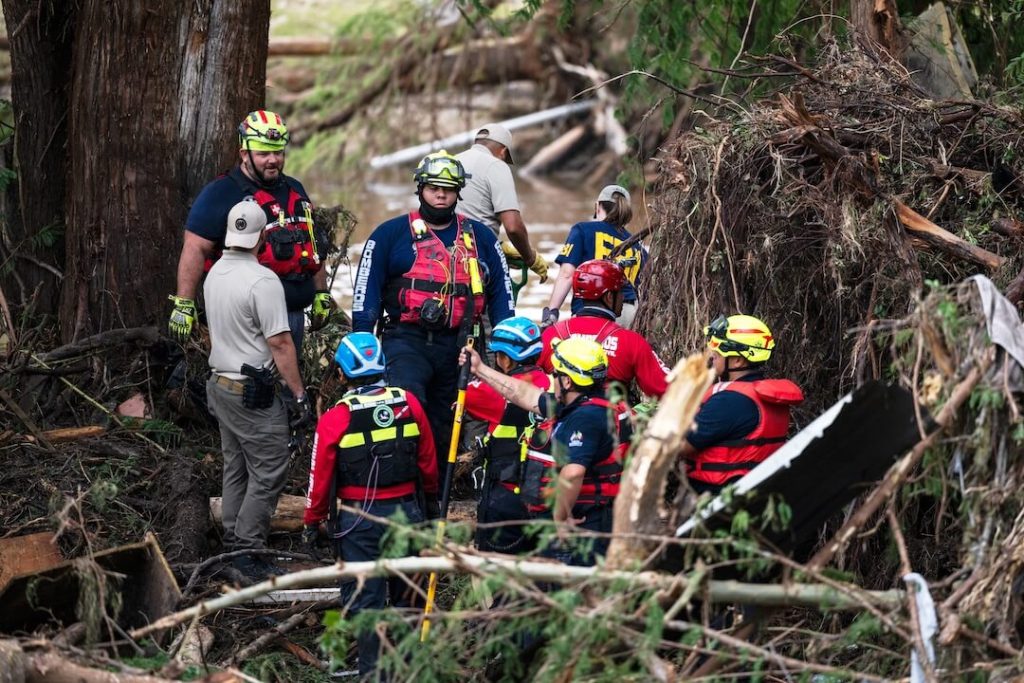Central Texas Flood Misinformation: A Case Study in the Perils of Unverified Reporting
The devastating floods that ravaged Central Texas in late July 2024, claiming at least 95 lives, became a breeding ground for misinformation, highlighting the challenges faced by journalists in disaster situations. Amidst the tragedy, a heartwarming but ultimately false story emerged about two young girls found alive in a tree after being swept away by floodwaters. The story, initially reported by The Kerr County Lead, spread rapidly on social media, offering a glimmer of hope in the face of widespread devastation. However, the narrative quickly unraveled, exposing the dangers of relying on unverified information, especially during emotionally charged events.
The Kerr County Lead, a small local news outlet, received multiple tips about the alleged rescue near Comfort, Texas. Fueled by eyewitness accounts from volunteers and community members at the scene, the newspaper published the story without official confirmation. The editor, Louis Amestoy, explained that the overwhelming enthusiasm and consistency of the accounts, coupled with a perceived lack of responsiveness from officials, led him to believe the story was credible. He acknowledged his decision not to seek official verification, anticipating a delayed response due to the ongoing crisis, contributed to the error.
The story’s rapid dissemination was amplified by social media, shared by individuals, local and national news outlets, and even verified accounts with large followings. Thousands embraced the narrative, finding solace in the midst of tragedy. However, the Kerr County Sheriff soon debunked the story, forcing Amestoy to issue a retraction. While many social media users and news outlets deleted or corrected their posts, the false narrative persisted in some corners of the internet, demonstrating the enduring power of misinformation.
The incident underscores the critical importance of journalistic verification, particularly in disaster scenarios. Experts emphasize the need for reporters to clearly identify sources, ensuring accountability and discouraging exaggeration or misrepresentation. Kelly McBride, a senior vice president at Poynter, highlighted the value of source attribution in holding individuals responsible for the information they provide. She further stressed the importance of post-incident reviews to identify breakdowns in reporting processes and prevent future errors.
The origin of the false narrative can be traced back to a Facebook Live video by Cord Shiflet, a volunteer involved in cleanup efforts. Shiflet recounted the story, citing information he purportedly received from Department of Public Safety officials. While Shiflet later issued a retraction and apology, his initial video had already ignited the misinformation wildfire. The Economic Times and The Kerrville Daily Times also reported the story, based on Shiflet’s video and other alleged eyewitness accounts.
The incident serves as a sobering reminder of the challenges facing journalists navigating the complex landscape of misinformation, particularly during high-stress events. The emotional intensity of a disaster can create a fertile ground for rumors and unverified information to spread. Journalists must remain vigilant, prioritizing accuracy and thorough verification over the allure of a compelling narrative, even when faced with time constraints and limited resources. Amestoy’s experience highlights the need for newsrooms, large and small, to implement rigorous fact-checking protocols and critically evaluate information, especially when it originates from unofficial channels or unattributed sources. The incident also demonstrates the collective responsibility of social media users and news consumers to critically assess information before sharing it, recognizing that even seemingly credible sources can contribute to the spread of misinformation. In the aftermath of the Texas floods, the false rescue story serves as a cautionary tale, reminding us that while hope is essential during times of crisis, it cannot replace the fundamental principles of journalistic integrity and accurate reporting.


